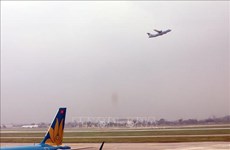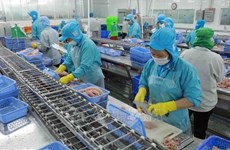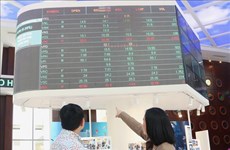Mobilising resources for Central Highlands
$0The Government will mobilise all resources to
develop infrastructure in the Central Highlands. $0
$0The Government will mobilise all internal and external resources to
develop modern infrastructure in the Central Highlands to lure
investment to the region. $0
$0
Prime Minister Nguyen Tan
Dung made the affirmation at the second conference on investment
promotion in the Central Highlands that took place in Pleiku city, Gia
Lai province on April 12. $0
$0
Priority will be given to
major transport projects that connect sea ports, airports, coastal urban
areas and neighbouring regions, he said. $0
$0
The leader
urged the region to pay attention to upgrading the Ho Chi Minh Trail,
the construction of highways running through Dau Giay-Da Lat and
Pleiku-Quy Nhon intersections, and railways linking the Central
Highlands to central coastal and southeast regions. $0
$0
Buon Ma Thuot, Pleiku and Lien Khuong airports must be modernised to attract more investors, he said. $0
$0
Dung instructed localities in the region to enhance coordination and
utilise the region’s potential and advantages to attract investment
while paying attention to training good managers and skilled workers. $0
$0
The localities were also required to put forth appropriate policies to
encourage the application, renovation and transfer of technology while
boosting administrative reform to create an open investment environment.
$0
$0
The Government will continue to work out
preferential policies, focusing on the region’s strengths, to attract
greater investment and ensure regional sustainable and rapid
development, Dung affirmed. $0
$0
The PM assigned the
Ministry of Planning and Investment and the Ministry of Agriculture and
Rural Development to partner with localities to select and propose a
number of key forestry and agricultural projects to call for investment.
$0
$0
Regarding economic and trade ties between the
Central Highlands and border provinces in Laos and Cambodia ,
Dung required the region to combine investment promotion with national
defence, security and social order to ensure the region remains a firm
base for the national construction and defence cause. $0
$0
At the meeting, Minister of Planning and Investment Bui Quang Vinh
underlined huge investment opportunities in the Central Highlands . The
region needs about 400 trillion VND for development during the
2011-2015 period, he said. $0
$0
The ministry will finalise
and submit to the Government a decision on the issuance of specific
policies and incentives for the region’s socio-economic development and
national security, focusing on investment promotion, FDI attraction in
education and training, the mobilisation and development of high-quality
human resources and the development of small- and medium-sized
enterprises. $0
$0
Governor of the State Bank of Vietnam
Nguyen Van Binh said the bank has coordinated with the Steering
Committee for the Central Highlands , Party committees and authorities
of the five provinces in the region to develop the banking master plan
that serves economic development in the area. $0
$0
The bank
will work as a bridge for all social welfare programmes in poor
districts and communes, and households experiencing difficulties in the
Central Highlands economic zone. $0
$0
On this occasion,
banks contributed over 251 billion VND to social welfare programmes in
the region, of which 184 billion VND came from commercial banks, said
President of the Bank for Investment and Development of Vietnam (BIDV).
$0
$0
Commercial banks also signed 28 contracts worth nearly
24 trillion VND with regional businesses operating in the fields of
coffee, rubber and hydroelectricity. $0
$0
Thirteen businesses were also granted investment licences with a total registered capital of more than 16 trillion VND. $0
$0
At the meeting, regional leaders pledged to continue their efforts in
administrative reform and investment environment improvement, saying the
region always creates the most favourable conditions for investors. $0
$0
The Central Highlands covers an area of over 5.4 million hectares, of
which 1.36 million hectares are red-coloured basaltic soil (making up
66 percent of the country’s total area of basaltic soil), and has a
population of 4.8 million people. $0
$0
The region is now
home to various agricultural products of high economic value and a
competitive edge both at home and abroad, such as coffee, rubber, tea,
pepper, cotton, drugs, fruit trees, and paper pulp. $0
$0
Hydroelectricity, construction materials and agricultural product processing have become the region’s strengths. $0
$0
Services, transport, telecommunication and banking sectors have also developed rapidly. $0
$0
The region’s per capita annual income increased from 2.9 million VND in 2001 to 26.9 million VND in 2012. $0
$0
After the first conference in 2009, investors have poured over 90 trillion VND into the region. $0
$0
Since 2005, the region attracted over 192 million USD in official
development assistance with the focus on agriculture and rural
development, poverty reduction, urban infrastructure, transport,
education, training, healthcare and irrigation. $0
$0
By the end of March this year, the region had lured 169 FDI projects with a total registered capital of 900 million USD. $0
$0
However, the region still faces a wide range of difficulties,
including its geographical location, distracted population, high poverty
rate, poor education and potential risks in security and political
stability.-VNA$0













